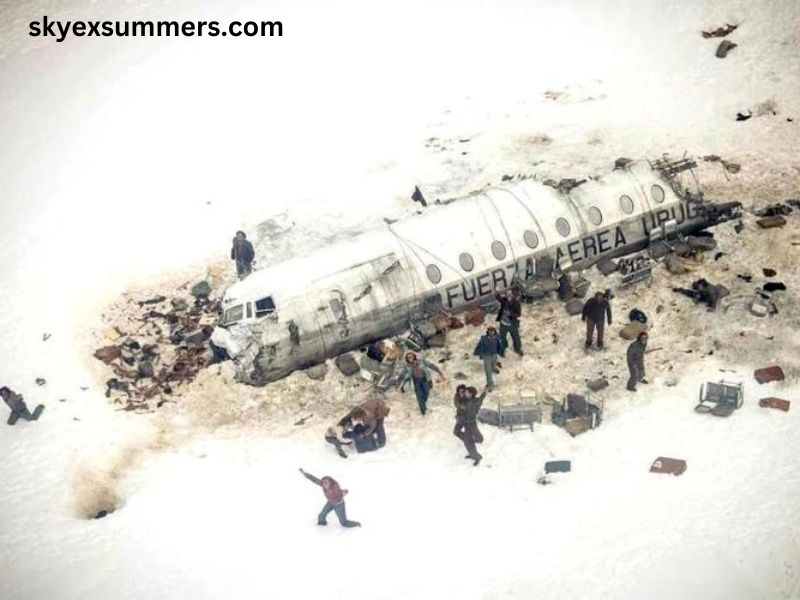The “Society of the Snow,” or “Sociedad de la Nieve,” is a poignant story of survival that has captivated audiences worldwide, especially through the lens of the tragic events surrounding the 1972 Uruguayan Air Force Flight 571. This flight, carrying a rugby team, friends, and family, met with disaster in the Andes mountains, leading to an extraordinary narrative of human endurance, camaraderie, and the moral dilemmas faced in extreme circumstances.
The Incident
On October 13, 1972, the Uruguayan Air Force Fairchild FH-227D aircraft took off from Montevideo, Uruguay, bound for Santiago, Chile. Among the 45 passengers were members of the Old Christians Club rugby team, their friends, and family. Bad weather and navigational errors led the plane to crash into the Andes, at an altitude of over 12,000 feet, leaving survivors in an inhospitable environment, fraught with harsh conditions and limited resources.
As the wreckage lay scattered across the snow-covered peaks, the reality of survival began to sink in. Initial hopes of a quick rescue faded as days turned into weeks, and the survivors were faced with dwindling supplies and extreme cold. The harsh reality forced them to confront a devastating decision: how to stay alive in the face of death.
The Struggle for Survival
The days following the crash were harrowing. Survivors quickly organized themselves into small groups, focusing on finding food and shelter amidst the wreckage. They salvaged what they could from the plane, using seats and debris to create makeshift shelters against the relentless snow and biting winds. Their only source of sustenance became the bodies of those who had perished in the crash.
This decision was met with profound moral and ethical dilemmas. The survivors had to weigh the value of human life against their instinct for survival. Their resolve was constantly tested, as they struggled to maintain their humanity amidst the dire circumstances. The story of their survival is not merely about the physical act of staying alive, but also about the psychological battles they faced in making such harrowing choices.
The Search for Rescue
As days turned into weeks, the search for the crash site was becoming increasingly desperate. Initial rescue efforts were hampered by the harsh conditions and the remoteness of the location. Families of the passengers held onto hope, but as time went on, their hopes dwindled. The Uruguayan government was eventually forced to call off the search after several weeks, declaring the passengers lost.
However, the survivors remained undeterred. They began to formulate plans for their own rescue. Using parts of the aircraft, they attempted to create signals to attract attention from rescuers. They made an audacious decision to hike down the mountains in search of help, knowing the risks involved but understanding that their chances of survival were dwindling.
The Journey Down the Mountain
After enduring 72 days in the mountains, a small group of survivors set off on the treacherous journey down the Andes. This decision was not made lightly; it required immense courage and determination. The group, consisting of Fernando Parrado and Roberto Canessa, faced extreme weather, physical exhaustion, and the constant threat of avalanches. Their resolve was fueled by the memories of their friends and family, and the hope that they might find help for the others still trapped in the mountains.
Their journey was fraught with danger. The pair navigated through snowstorms, steep cliffs, and icy terrain, often questioning whether they would ever find civilization again. After ten days of perilous travel, they finally encountered a Chilean shepherd, who alerted authorities to the situation. This moment marked the beginning of the end of their ordeal.
The Aftermath
The news of the survivors’ story shocked the world. Upon their return, the survivors faced not only the physical aftermath of their harrowing ordeal but also the emotional scars that would linger long after. They were celebrated as heroes but also faced scrutiny and judgment for the choices they made during their time in the mountains.
The society they returned to struggled to comprehend their experiences. The moral dilemmas they faced ignited discussions about ethics, survival, and human nature. The story of the Society of the Snow became a focal point for debates about morality in extreme circumstances and the lengths to which people will go to survive.
Cultural Impact
The legacy of the Society of the Snow has endured through various forms of media, including books, documentaries, and films. One of the most notable adaptations is the 1993 film “Alive,” which brought the survivors’ story to a wider audience. The film, based on Piers Paul Read’s book, dramatized the events of the crash and the subsequent struggle for survival, resonating with viewers around the globe.
In addition to its cinematic representation, the Society of the Snow has inspired countless discussions about resilience, the human spirit, and the complexity of moral decision-making. It serves as a reminder of the strength of community and friendship in times of crisis, and the profound impact of shared experiences on individual and collective identity.
Reflections on Humanity
The narrative of the Society of the Snow goes beyond mere survival; it prompts introspection about what it means to be human. The survivors’ experiences highlight themes of sacrifice, loyalty, and the instinct for survival that exists within all of us. Their story encourages reflection on how we navigate moral choices in our own lives, particularly when faced with extraordinary challenges.
As society grapples with issues of ethics and humanity, the story of the Society of the Snow remains a powerful testament to the resilience of the human spirit. It invites us to consider our own values and the lengths we would go to protect those we love. The bonds formed during the crisis underline the importance of solidarity and support, reminding us that even in the darkest moments, we can find hope and strength in each other.
Conclusion
The Society of the Snow is a haunting reminder of the fragility of life and the power of the human spirit. The experiences of the survivors reflect profound truths about survival, morality, and community. Their story transcends time and culture, inviting us to explore the depths of human endurance and the ethical dilemmas that arise in extreme situations.
Through their journey, they not only survived the unforgiving Andes but also imparted invaluable lessons about resilience, empathy, and the enduring power of hope. As we continue to reflect on their legacy, we are reminded of our own capacity for courage and the importance of standing together in the face of adversity. The Society of the Snow is not just a story of survival; it is a testament to what it means to be truly human.



